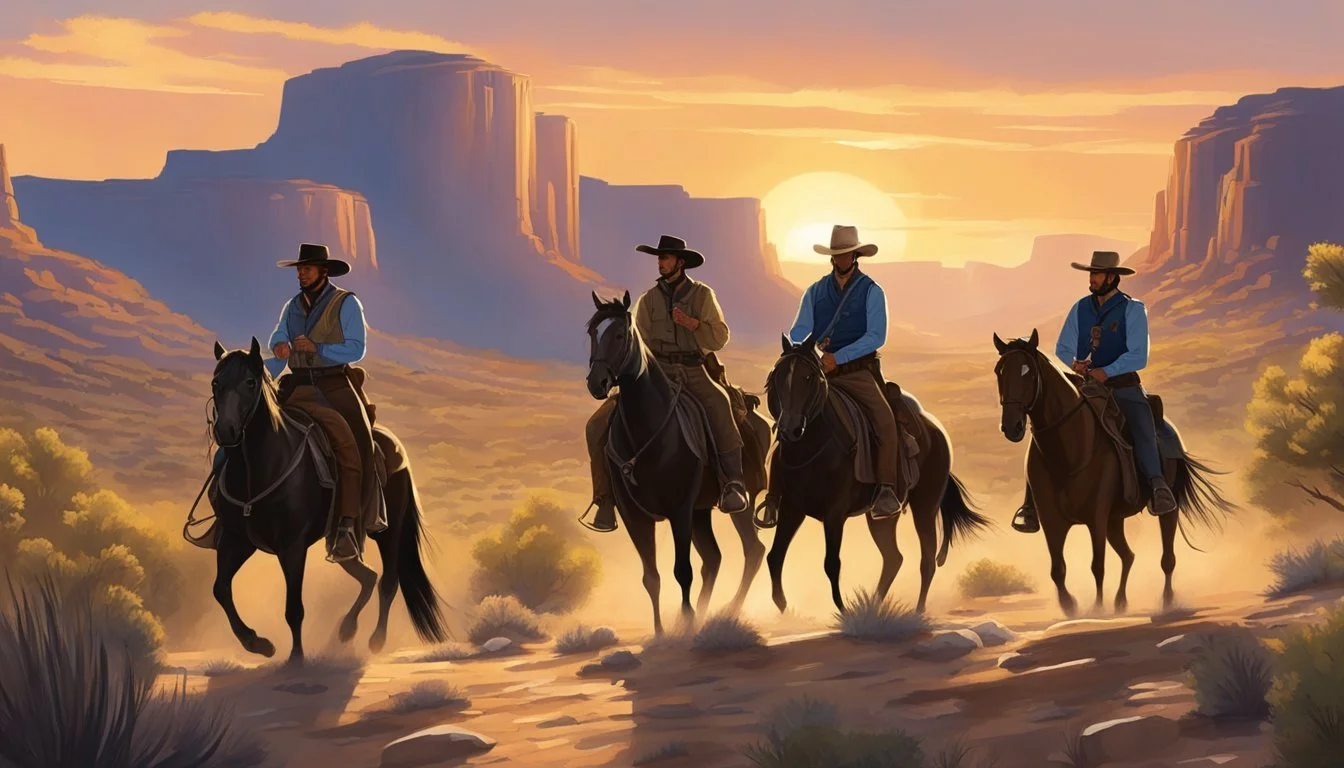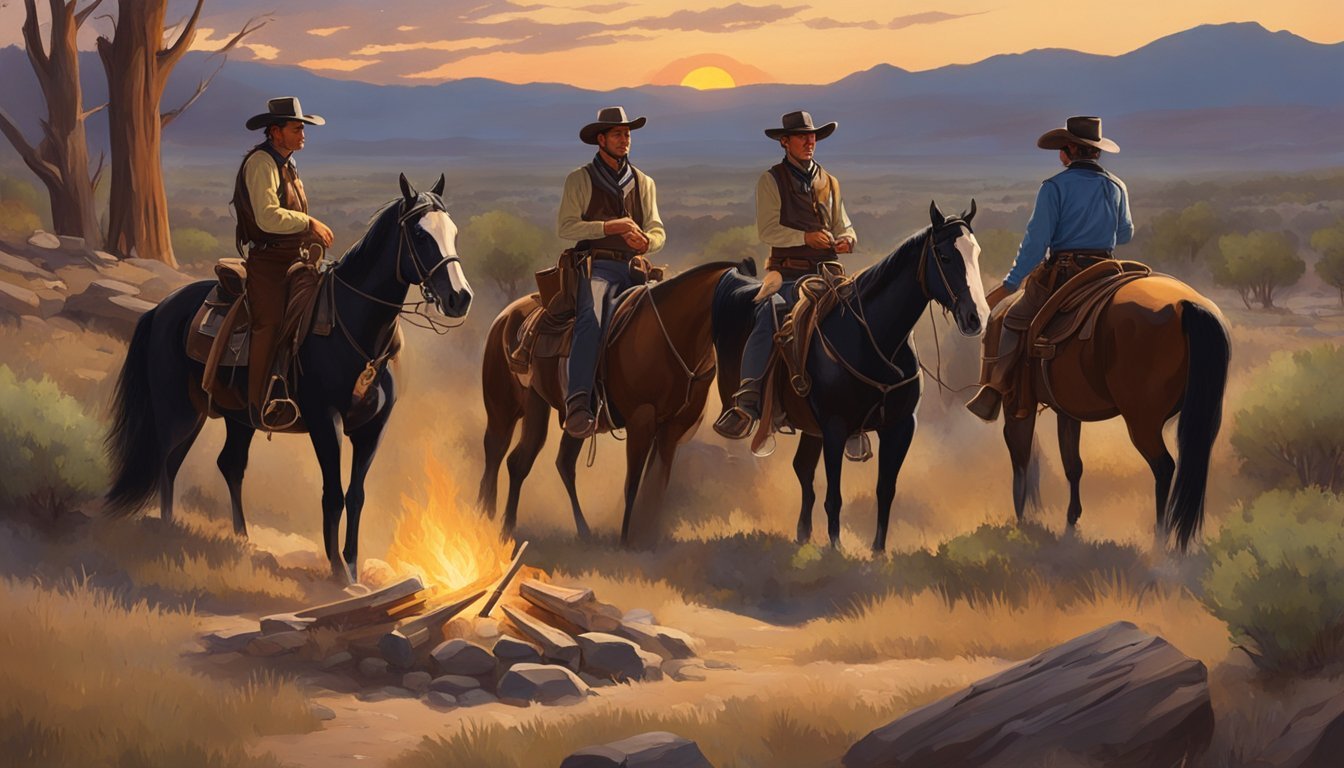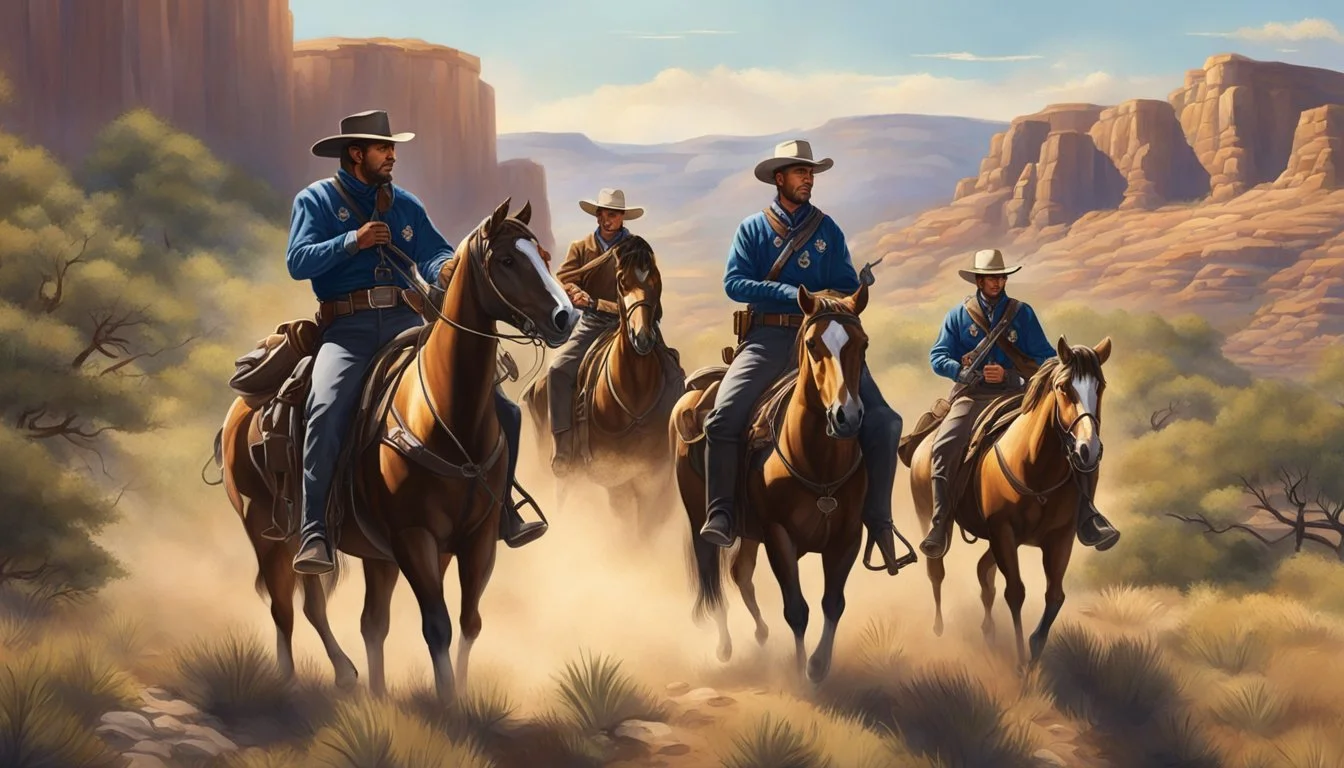The Legendary Texas Rangers
Unveiling the Myths of Frontier Justice
The Texas Rangers hold a storied place in the annals of American history, particularly in the Old West. Established in the early 19th century, this distinguished law enforcement group has been pivotal in shaping the frontier during a period of rapid expansion and conflict. Tasked with a mandate to protect settlers, the Texas Rangers became known for their tenacity and courage, evolving into legendary figures synonymous with the rugged justice of the Old West.
Their reputation was built on a foundation of heroic acts and a dogged pursuit of outlaws, often facing insurmountable odds with unwavering resolve. Through the centuries, the Rangers' role expanded from dealing with local skirmishes to engaging in military battles, enforcing the law, and curbing cattle rustling. However, their legacy is not one-sided; it encompasses moments of valor as well as controversies that challenge the simplistically noble image of these frontier lawmen.
The Texas Rangers adapted over time, using methods that, while effective, sometimes sparked divisive opinions regarding their implementation of justice. Despite these contentions, they have become emblemized as quintessential heroes of the Old West. Their story is not just one of personal bravery but also a narrative that reflects the complex unfolding of law enforcement in the United States.
Origins and Formation
The Texas Rangers represent a significant facet of law enforcement with origins dating back to the early 19th century. Their development from informal volunteer groups to an organized professional force was crucial in shaping the frontier law enforcement landscape.
Stephen F. Austin and Early Initiatives
In 1823, Stephen F. Austin, known as the "Father of Texas," established the first group of Texas Rangers. Austin's initial band of ten men operated primarily as a volunteer militia, tasked with protecting the settlers from Native American attacks as Anglo-American colonization expanded into the Mexican territory of Tejas. These early initiatives were community-driven, arising from necessity in a hostile and unpredictable frontier environment.
Transition from Volunteers to Professional Force
The transition of the Texas Rangers from a loosely organized group of volunteers to a structured professional force was gradual. As the population of the Texas territory grew and the need for consistent and reliable law enforcement became apparent, the Texas Rangers evolved into a sanctioned paramilitary division. By the mid-19th century, the Rangers had become an official arm of the State of Texas, engaging in law enforcement duties and serving as a defining symbol of authority across the state, especially on the vast and often lawless frontier.
Expanding Territories and Early Conflicts
The Texas Rangers played a pivotal role during the period of territorial expansion and the resulting conflicts in the 19th-century American Southwest. As Texas grappled with its identity and borders, these lawmen were instrumental in key events such as the Mexican-American War, skirmishes in Indian Territories, and the struggle for independence from Mexico.
Mexican-American War
The Mexican-American War (1846-1848) saw the Texas Rangers act as scouts and participate in traditional combat roles alongside the U.S. Army. As America sought to fulfill its notion of Manifest Destiny, the Rangers significantly contributed to the war effort. They were known for their effectiveness in navigating the challenging terrain and utilizing their small unit guerrilla tactics against Mexican forces.
Indian Territory Engagements
Within the Indian Territory, which encompassed much of present-day Oklahoma, Texas Rangers faced frequent conflicts with indigenous tribes. These engagements primarily involved defending Texan settlements against raids and pursuing hostile groups. The Rangers' deep understanding of the local geography and adept tracking skills were essential in these territories, which were fraught with tension as settlers expanded westward.
Role in Texas Independence
The call for Texas Independence marked a crucial chapter in the history of the Texas Rangers. Prior to the formal outbreak of the Texas Revolution in 1835, the Rangers were already active in protecting settlers from various threats. Their involvement escalated during the war for independence from Mexico, with the Rangers growing in prominence and number, eventually becoming a significant force in the Texan victory at the Battle of San Jacinto.
Rangers in Warfare
The Texas Rangers played significant roles in various armed conflicts, particularly during the Civil War and along the volatile Mexican border. Their expertise in reconnaissance and guerilla tactics was pivotal in many battles, enforcing law and maintaining peace.
The Civil War
During the Civil War, the Texas Rangers enlisted in the Confederacy, serving primarily in cavalry units. They participated in major battles and campaigns, leveraging their knowledge of local terrain and combat experience. Their skills in long-range patrols, scouting, and hit-and-run warfare were invaluable to the Confederate forces, often providing a strategic edge in southwestern engagements.
Notable Engagements:
Battle of Gloryetta Pass
Battle of Chickamauga
Mexican Border Disputes
In the 19th and early 20th centuries, the Texas Rangers were instrumental in addressing Mexican border disputes. They were often called upon to protect settlers and engage with bandits and hostile forces. During the Mexican War of 1846-1848, Rangers were formidable opponents in multiple battles.
Key Responsibilities:
Monitoring the border
Pursuing raiders
Establishing peace
Their presence was a stabilizing force during tumultuous times, although their methods in achieving control and order were sometimes controversial. Following Texas' entrance into the Union, the Rangers contributed to enforcing federal and state laws along the international border.
Famous Rangers and Their Legacies
Within the rich tapestry of American frontier history, the Texas Rangers hold a venerable position as symbols of justice and order. This section showcases some of the most prominent Rangers whose actions have cemented their places in history, impacting law enforcement and the cultural lore of the Old West.
John Coffee Hays and the Frontier Battalion
As a renowned Texas Ranger captain, John Coffee Hays was instrumental in the formation of the Frontier Battalion, a force that would become key in defending the Texas frontier. Under Hays' leadership, the battalion honed their skills and established new tactics in reconnaissance and engagement, which profoundly shaped the development of the Rangers as a formidable force against outlaws and hostile threats.
Frank Hamer and the Pursuit of Bonnie and Clyde
Frank Hamer's steadfast resolve was epitomized through his relentless pursuit of the infamous criminal duo, Bonnie and Clyde. His extensive experience as a Ranger equipped him with the tactical knowledge necessary to track down the outlaws, leading to their eventual demise in 1934. Hamer's success against Bonnie and Clyde is a testament to the persistent and methodical approach of the Rangers in upholding the law.
John B. Jones and State Reorganization
Major John B. Jones played a pivotal role in the reorganization and modernization of the Texas Rangers during the 19th century. He was chosen to command the Frontier Battalion in 1874 and successfully managed state security issues, including conflicts with Native American tribes and the securing of the Texas frontier. Jones’ leadership helped transition the Rangers into a structured, official law enforcement agency, and his contributions have been recognized by his induction into the Texas Rangers Hall of Fame.
By chronicling their storied past and highlighting these extraordinary individuals, one gains a deeper appreciation of the Texas Rangers' enduring legacy in American history.
Law Enforcement and Crime Fighting
The Texas Rangers have been a formidable law enforcement agency since their inception, playing a critical role in combating crime and bringing outlaws to justice across the vast Texas frontier.
Outlaws and the Old West
The Old West era was marked by notorious outlaws and widespread lawlessness that permeated frontier life. The Texas Rangers' reputation was built on their relentless pursuit of these criminal elements. They tackled various forms of crime, from cattle rustling to bank robberies, often in rugged and remote areas where local law enforcement's reach was limited. Their efforts contributed significantly to establishing order out of the chaos that once defined the Texas territories.
Tracking and Capturing Criminals
The Rangers excelled in tracking and capturing criminals due to their skillful use of strategy and local knowledge. They employed various techniques, from analyzing physical evidence to gathering local intelligence. Their methodology often involved:
Scouting: Determining the best paths through harsh terrain.
Surveillance: Collecting and acting upon timely information.
Deduction: Interpreting signs and evidence to anticipate an outlaw's movements.
These methods positioned the Texas Rangers as a leading law enforcement agency and helped in deterring violence and crime fighting well beyond the borders of Texas. Their storied history in upholding law and order solidified their legacy in American history.
Cultural Impact and Representation
The Texas Rangers have left an indelible mark on American culture, influencing the portrayal of the Old West through various mediums and solidifying their status as symbols of bravery and law enforcement.
In Literature and Film
Literature: The Rangers have been immortalized in countless books. One of the most notable is Larry McMurtry's Lonesome Dove, which paints a vivid picture of the rugged life and adventures of former Texas Rangers during the late 19th century.
Film: Hollywood has long been fascinated with the Texas Rangers, often depicting them as courageous lawmen in the Lone Star State. The Lone Ranger, an iconic character from a 1949-1957 television series, is a prime example of the Rangers' influence, showcasing their heroism in the face of danger and their role as protectors of settlers against various threats.
Modern Mythology and Iconography
The Texas Rangers have transcended their historical roots to become modern mythical figures, often referred to as “Los Diablos Tejanos” or the Texan Devils. Their portrayals in pop culture reinforce their legendary status, with iconic images of badge-wearing, gun-toting Rangers contributing to the mythology of the True West.
Historical Significance
The Texas Rangers played a pivotal role in the Old West, helping to shape the development of Texas and the American frontier. They are remembered for their bravery as lawmen who defended the settlers and enforced the law during a period of immense change and challenge, leaving a legacy that continues to impact interpretations of their history and the mythos surrounding them.
Controversies and Re-evaluations
The Texas Rangers have been subjects of heroism and law enforcement sagacity in popular culture, yet they've faced intense scrutiny for actions in their past. This section examines the complexities of the Rangers amidst accusations of brutality and their involvement in civil rights controversies.
Debates on Ranger Brutality
The Texas Rangers have a storied past that includes tales of bravery but also incidents that question their methods of upholding law enforcement. Historical accounts have documented cases where Ranger brutality has been a focal point of contention. In particular:
Incidents: Reports and trials from the 19th and 20th centuries have surfaced, revealing instances of excessive force used against alleged criminals and local populations, including Native Americans and Mexican-Americans.
Public Perception: The Rangers' image has evolved as more of these controversial actions have come to light, impacting their once unblemished reputation as impartial arbiters of justice.
Civil Rights and Legal Trials
The involvement of the Texas Rangers in civil rights matters has often had them walking a tightrope between law enforcement and political interests.
Key Cases: Rangers were involved in various civil rights issues, notably during the mid-20th century, which led to legal scrutiny and trials that assessed their conduct and the consequences thereof.
Policy Changes: These trials and public debates have occasionally led to re-evaluations of policies and practices within the Texas Rangers to address allegations of human rights abuses and ensure the balance of justice and civil liberties.
The Modern Texas Rangers
Transitioning from the storied past of frontier justice to the complexities of 21st-century law enforcement, the Texas Rangers have evolved into a premier entity within the Texas Department of Public Safety, upholding the law and offering protection in the modern era.
Texas Department of Public Safety
The Texas Department of Public Safety (DPS) serves as the state's primary law enforcement agency. It encompasses the Texas Rangers, who operate as the DPS's elite investigative unit. They are responsible for major incident crime investigations, unsolved crime/serial crime investigations, border security, and more within the state.
Functions:
Complex criminal investigations
Public corruption investigations
Officer-involved shooting investigations
Border security operations
Specialized law enforcement training
Under the umbrella of DPS, the Texas Rangers also work in tandem with other state police and local law enforcement agencies to fulfill their role in public safety and protection.
Evolution into Contemporary Times
The Texas Rangers have undergone significant transformations to adapt to the evolving demands of law enforcement. The modern Rangers integrate advanced technology and forensic methods to aid in their investigative duties.
Technological Integration:
Utilization of advanced forensic sciences
Cybercrime unit involvement
Incorporation of digital evidence in investigations
Up-to-date intelligence gathering techniques
In the context of the modern era, the Rangers have also been involved in initiatives to increase transparency and accountability within law enforcement, responding to the public's expectations for modern-day policing.
Related Information
The Texas Rangers are an integral part of the rich tapestry of Texas history, celebrated especially as the State of Texas approaches its bicentennial. There is a wealth of resources for those interested in delving deeper into the compelling narratives and accounts of these storied lawmen.
Articles and Further Study
History Magazines: Publications such as True West Magazine have issued articles commemorating the Texas Rangers' anniversary, highlighting their significant role since the early 19th century.
Scholarly Articles: Researchers can access in-depth analyses of the Texas Rangers' contributions to law enforcement and their methods.
Online Databases: Many articles are available through digital archives and history databases where further study on specific Rangers or critical events in Texas history can be pursued.
Museums and Halls of Fame
Texas State History Museum: Visitors can explore exhibits on the larger-than-life saga of the Texas Rangers, encompassing their formation, famous battles, and notable Rangers.
Texas Ranger Hall of Fame and Museum in Waco: This institution serves as a memorial to the valorous service of the Texas Rangers and offers extensive historical displays and educational programs.







